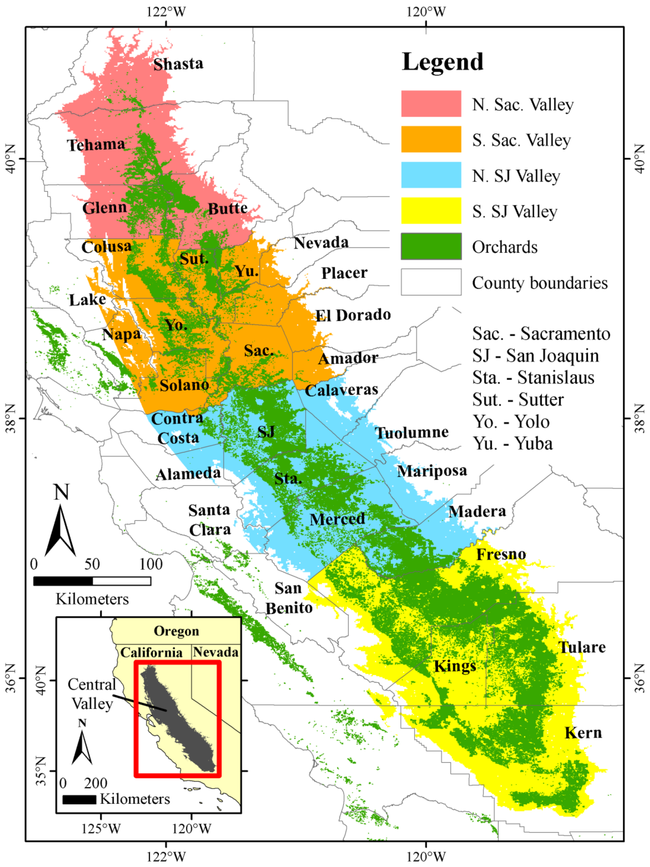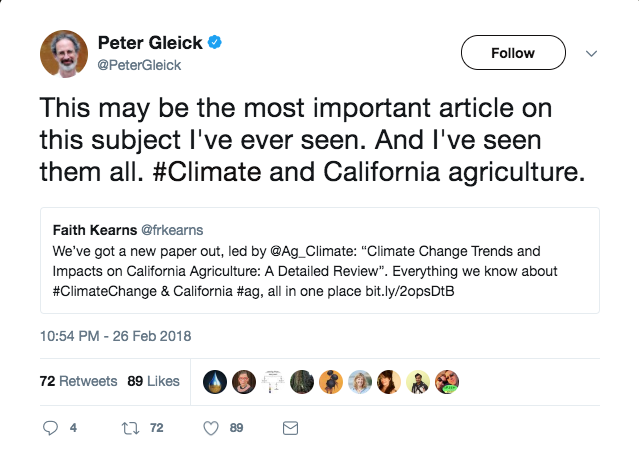California agriculture industry must act now to adapt to climate change
"This article received more than 1000 views in less than a day," Pathak wrote in an email to colleagues.
The review article summarizes historical and future climate trends and their impacts on California agriculture. The authors also suggest adaptation and mitigation strategies.
Shortly after Kearns, California Institute for Water Resources academic coordinator, tweeted, “We've got a new paper out, led by @Ag_Climate: “Climate Change Trends and Impacts on California Agriculture: A Detailed Review”. Everything we know about #ClimateChange & California #ag, all in one place http://bit.ly/2opsDtB,” journalists took notice.
“Climate change could decrease the yield of some crops in the state by up to 40 percent by 2050. That's a big deal for farmers growing more than 400 commodities,” Ezra Romero of Capital Public Radio reported. “Tapan Pathak, a UC Cooperative Extension specialist based in Merced, and his research team analyzed more than 90 studies on climate change and discovered that warming temperatures may alter where crops grow across California. Their findings were published in Agronomy Journal.
“In order to make California agriculture more sustainable we have to act now,” Pathak said.
Ian James of the Desert Sun spoke with Kearns. “One under-appreciated aspect of California's climate is how important our temperature envelope is to California's agricultural sector. The right temperatures at the right times are absolutely crucial,” said Faith Kearns, a scientist with the California Institute for Water Resources who was part of the team. “For example, warm weather in January and February can reduce almond yields, but warm summers can reduce peach yields. So, there really is no-one-size-fits-all adaptation approach.”
In her report for KQED, Amel Ahmad noted, “Climate scientist and author Peter Gleick called it the most important report he's seen on the impact of climate change on California agriculture.”
The study was also covered in Courthouse News Service by Nick Cahill, Think Progress by Natasha Geiling, Digital Journal by Karen Graham, Grist by Nathanael Johnson, NPR by Ezra Romero, Modern Farmer by Dan Nosowitz and Fresno Bee by Brianna Calix.
This study was supported by the UC President's Carbon Neutrality Initiative and UC ANR.


